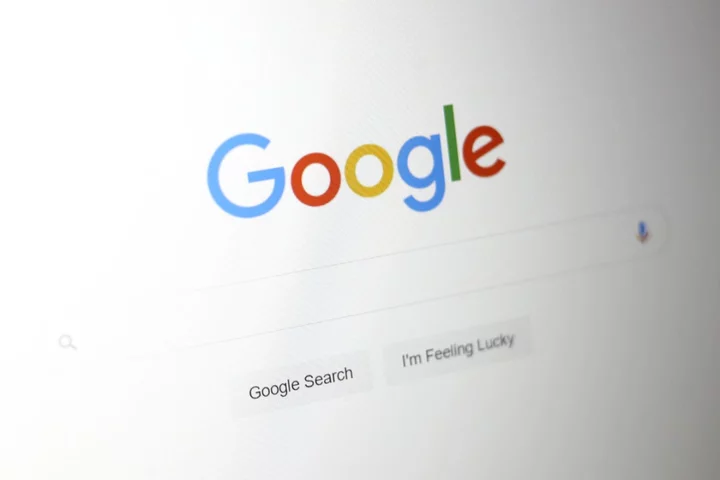
‘Is AI dangerous?’ UK’s most Googled questions about artificial intelligence
People in the UK want to know how artificial intelligence works, how to use it to make money and whether it will take their jobs, according to Google. The search engine company revealed the UK’s most googled questions about AI over the past three months ahead of Rishi Sunak’s AI summit. Here, PA takes a look at some of the burning questions the UK wants the answers to. What is AI? In a nutshell, AI refers to the training of machines to solve problems and make decisions in a way that is similar to how the human brain works. However, to boil AI down to a short definition would be to underestimate its complexity and variations. For example, “weak” or “narrow” AI is AI trained to perform specific tasks and enables technology people may be familiar with in their home, such as Amazon’s Alexa or autonomous vehicles, while “strong AI”, comprised of Artificial General Intelligence and Artificial Super Intelligence, refers to AI where a machine would have an intelligence equal to or surpassing humans. What is generative AI? Generative AI refers to models which can create something completely new based on the vast data they have been trained on. Recent examples of this include ChatGPT, where users can make requests such as “write a poem that features the Battle of Waterloo”. ChatGPT would then produce a new poem based on the material it had been trained on, in this case vast quantities of history books and poetry. How to make AI song covers? Much like the production of a new poem using AI, it is possible to create new music using models which have been trained on previously recorded sounds. However, this is proving tricky ground for human musicians who fear their work may be used without their consent to produce brand new creations, or even to imitate them. Spotify boss Daniel Ek told the BBC he thought there were legitimate use cases for the technology in music, but that it should not be used to impersonate real artists without their consent. He said there were three “buckets” of AI use in music: tools such as auto-tune, which he said was acceptable; software which impersonated artists, which was not; and a more controversial middle ground where AI-generated music was inspired by a specific artist but did not directly mimic them. How to make money with AI? The possibilities for making money using AI are seemingly endless, with people using it to produce music, books, essays, translations and much more. AI can also be used to streamline processes in existing jobs, producing presentations or documents in a fraction of the time it would usually take. However, the issue of copyright looms large over AI’s creative uses. Who created AI? While the concept has been discussed in art and culture for centuries, the 20th century will be remembered as the period when AI began to take practical shape. In 1950, wartime codebreaker Alan Turing published a paper called Computing Machinery and Intelligence in which he considered whether machines could think, introducing what became known as the Turing Test where a human would attempt to distinguish between the responses of another human and a computer. Six years later computer scientist John McCarthy coined the term “artificial intelligence” during the inaugural AI conference at Dartmouth College, while in the same year the first running AI software programme was created by Allen Newell, JC Shaw and Herbert Simon. Is AI dangerous? Tesla, SpaceX and X owner Elon Musk told the PA news agency at the UK’s AI Safety Summit: “I think AI is one of the biggest threats (to humans). “We have for the first time the situation where we have something that is going to be far smarter than the smartest human. “We’re not stronger or faster than other creatures, but we are more intelligent, and here we are for the first time, really in human history, with something that is going to be far more intelligent than us. “It’s not clear to me if we can control such a thing, but I think we can aspire to guide it in a direction that’s beneficial to humanity.” Will AI take my job? As with all technological advances, AI will change the way we work, making some jobs redundant but creating others too. Rishi Sunak recently attempted to assuage people’s fears, saying: “It’s important to recognise that AI doesn’t just automate and take people’s jobs. “A better way to think about it is as a co-pilot. “As with all technologies, they change our labour market, I think over time of course they make our economy more prosperous, more productive. “They create more growth overall but it does mean that there are changes in the labour market.” Read More Big tech poses ‘existential threat’ to UK journalism, survey of editors finds King warns of urgent need to ‘combat significant risks of powerful AI’ Kamala Harris arrives in the UK ahead of AI safety summit Study finds ‘deepfakes’ from Ukraine war undermining trust in conflict footage More than 500 potential cyber attacks logged every second, BT says AI being used to create child abuse imagery, watchdog warns
2023-11-02 11:16

Big tech poses ‘existential threat’ to UK journalism, survey of editors finds
The “anti-competitive practices” of big tech firms pose an “existential threat” to UK journalism, while the risks from AI-generated misinformation are “greater than ever before”, editors have warned. A poll by the News Media Association, a trade body for the newspaper industry, found 90% of editors believe Google and Meta pose a threat to the news industry. The Government has been urged to resist calls to water down the Digital Markets, Competition and Consumers Bill, which will force tech firms to pay news publishers for content used on their platforms. The Government must resist pressure from the tech platforms to water down the Digital Markets, Competition and Consumers Bill and pass this sensible legislation, which will help to level the playing field field between platforms and publishers and spur innovation and competition across the UK digital economy Owen Meredith, News Media Association Some 97% of editors said the risks posed by AI-generated misinformation are “greater than ever before” in the run-up to a general election, which is likely to take place next year. More than three-quarters (77%) of editors said news blackouts enforced by tech platforms weaken democratic engagement by limiting public access to trusted news. News Media Association chief executive Owen Meredith said: “The findings of our survey clearly show the huge level of concern from editors about the impact of the tech platforms’ activities on the sustainability of journalism. “The Government must resist pressure from the tech platforms to water down the Digital Markets, Competition and Consumers Bill and pass this sensible legislation, which will help to level the playing field field between platforms and publishers and spur innovation and competition across the UK digital economy.” Katie French, regional group editor at Newsquest, which owns many local newspapers, said: “While tech platforms have greatly enhanced our way of life by allowing unrestricted access to information and increased connection, they have severely impacted the business of news, and news brands such as my own have not been fairly compensated. “My titles have more readers than ever before in their history thanks to the global and national audiences our online content is exposed to. “However, we receive very little in the way of fair remuneration for the rich and high-quality service our content provides even by hosting our content or signposting readers to our stories through search engines. “Our very presence is giving credibility to these platforms that otherwise would be filled with clickbait, nonsense and unregulated information.” Original journalism everywhere should be protected Sun editor Victoria Newton The BBC’s plans to cut local radio provision and boost its online local news were also criticised, with 86% fearing it will “damage independent local journalism in the UK.” Sun editor Victoria Newton told the NMA’s Journalism Matters parliamentary reception on Tuesday: “Original journalism everywhere should be protected, as should the publishers that spend and invest in journalism. “I make a special mention for our vital local newspapers, without whom court cases and local democracy would go unreported. “These outlets should also be protected from the BBC’s expansionist activities, which risk driving them out of the market.” – A total of 30 editors responded to the online survey, which was carried out between August and September. Read More King warns of urgent need to ‘combat significant risks of powerful AI’ Kamala Harris arrives in the UK ahead of AI safety summit Study finds ‘deepfakes’ from Ukraine war undermining trust in conflict footage More than 500 potential cyber attacks logged every second, BT says AI being used to create child abuse imagery, watchdog warns ChatGPT and other chatbots ‘can be tricked into making code for cyber attacks’
2023-11-02 08:21
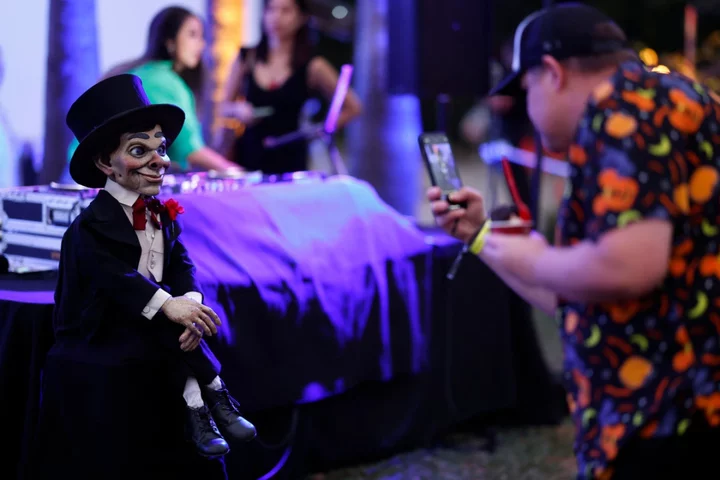
Disney+ launches cheaper subscription with ads
Disney has launched a new, cheaper subscription of its streaming service, with ads. The company will let subscribers pay £4.99 for the service if they are willing to have advertising injected at the start of films and inside TV shows. The advertising will be limited and users will see how long those ads are going to last, the company. Disney is just the latest in a range of subscription services, such as Netflix, to launch a cheaper version of the streaming service that is supported by advertising. The changes come amid a cost of living crisis and increasing competition for TV streaming subscriptions. As well as seeing ads, users on the new cheaper tier will be limited to watching two streams at once on one subscription, and will not be able to download offline. Netflix launched its ad-supported tier with similar limits, though it has restricted them somewhat in the time since. On Disney+, the more expensive ad-free tiers include the standard package at £7.99, or £79.90 annually, which has the same video and audio quality as the lower level but allows for downloads on up to 10 devices, while the premium model at £10.99, or £109.90, has improved video and audio quality and allows four devices to watch concurrently. The streaming giant has a host of series including The Bear, Elemental, and Coleen Rooney: The Real Wagatha Story. It also launched the new series following the Kardashian-Jenner family last year, titled The Kardashians, which follows on from its predecessor, Keeping Up With The Kardashians, in documenting the personal lives and business ventures of the siblings. General manager of Disney+ Europe, Middle East and Africa (EMEA), Luke Bradley Jones, said: “Today’s launch represents a significant milestone for Disney+ in the UK, offering customers the flexibility to select a plan that suits their needs and budget. “All of our customers can enjoy a wide range collection of award-winning original TV series and blockbuster movies, including FX’s The Bear, Elemental, and Coleen Rooney: The Real Wagatha Story, along with fan favourites like Season 2 of Marvel Studios’ Loki and the latest series of The Simpsons and Grey’s Anatomy.” Deborah Armstrong, country manager of the UK and Ireland for GM Media Networks and advertising EMEA, said: “Disney+ offers advertisers a prime opportunity to join our premium streaming platform, featuring our beloved brands and an exceptional line-up of movies and TV series. “The response from our clients and agencies has been overwhelmingly positive, firmly showcasing the quality of our content and the strong bond our brands share with audiences worldwide. “We’re partnering with a fantastic range of brands in all markets right from day one.” Additional reporting by agencies
2023-11-02 02:55
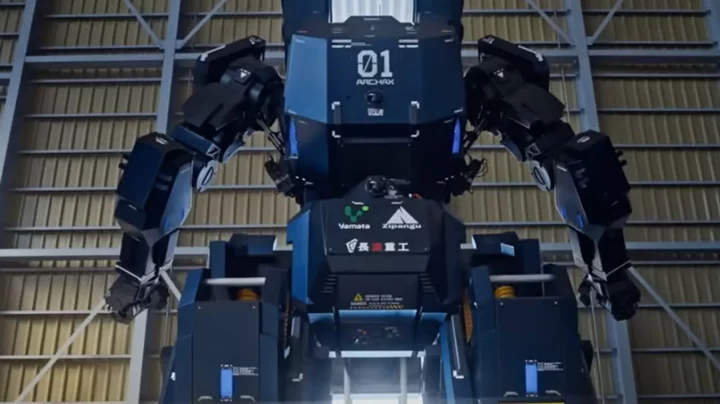
Giant anime 'Gundam' robots are being built to explore the Moon
A Japanese start-up company has revealed a 15-foot-tall robot with hopes of it one day exploring the moon. Tsubame Industries developed the $3 million (£2.5m) robot that resembles the "Mobile Suit Gundam" from a popular anime show. It will be displayed at the Japan Mobility Show set to take place until 5 November. Named after the avian dinosaur archaeopteryx, the Archax boasts a 'vehicle mode' in which it squats down onto its four legs and travels at the speed of six miles per hour. Ryo Yoshida, 25, chief executive of Tsubame Industries plans to build for disaster relief or to explore space in the future. "Japan is very good at animation, games, robots and automobiles so I thought it would be great if I could create a product that compressed all these elements into one," he said. "I wanted to create something that says, ‘This is Japan’." Yoshida shared early images of the Archax on X/Twitter, when Akinori Ishii, technical director at the Gundam Global Challenge, messaged him and got involved in the production. "On Earth, there are many specialized machines for special work," he said. "On a moon base, we are not able to have so many machines. So, maybe a human-like machine will be used in such a situation." The company reportedly aim to create an Archax prototype suitable to explore space by 2028, according to Nikkei Asia. How to join the indy100's free WhatsApp channel Sign up for our free Indy100 weekly newsletter Have your say in our news democracy. Click the upvote icon at the top of the page to help raise this article through the indy100 rankings.
2023-11-02 00:19

Sam Bankman-Fried built 'pyramid of deceit,' jury is told as trial nears end
By Luc Cohen and Jody Godoy NEW YORK (Reuters) -FTX founder Sam Bankman-Fried built the cryptocurrency exchange into a "pyramid
2023-11-01 22:45
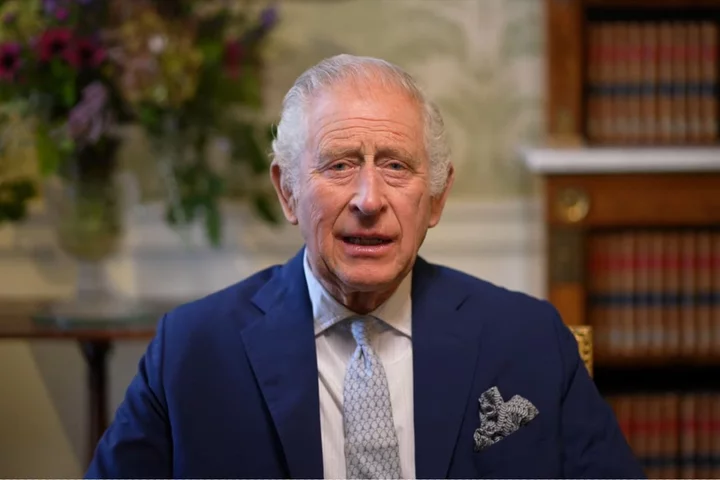
King warns of urgent need to ‘combat significant risks of powerful AI’
The King has hailed artificial intelligence (AI) as “one of the greatest technological leaps in the history of human endeavour” but warned of the urgent need to work together to combat its “significant risks”. In a video message for the opening session of the AI Safety Summit at Bletchley Park, the King stressed the need to make sure the technology remained “safe and secure”, and said the speed of its advancement could surpass even human understanding. He likened the “rapid rise of powerful artificial intelligence” to the world’s greatest scientific breakthroughs including the discovery of electricity and the splitting of the atom – and even the harnessing of fire. And he spoke of its potential to “transform life as we know it” for the better, possibly leading to cures for cancer and other diseases, and helping to create green energy. Charles, in footage recorded at Buckingham Palace before he left for his state visit to Kenya, said: “We are witnessing one of the greatest technological leaps in the history of human endeavour. “The rapid rise of powerful artificial intelligence is considered by many of the greatest thinkers of our age to be no less significant, no less important, than the discovery of electricity, the splitting of the atom, the creation of the world wide web, or even the harnessing of fire.” He added: “AI holds the potential to completely transform life as we know it to help us better treat, and perhaps even cure, conditions like cancer, heart disease and Alzheimer’s; to hasten our journey towards net zero and realise a new era of potentially limitless clean, green energy – even just to help us make our everyday lives a bit easier. “However, if we are to realise the untold benefits of AI, then we must work together on combating its significant risks too.” The AI summit sees representatives of nearly 30 countries, including the US, France and China, meeting with leading AI companies and civic society groups to discuss the risks of the emerging technology. Delegates have already agreed on a world-first statement – the “Bletchley declaration on AI safety” – it was announced on Wednesday. The King thanked those attending for laying the foundation for a consensus to ensure “this immensely powerful technology is, indeed, a force for good in this world”. Highlighting the need to keep on top of the technology, the King said: “AI continues to advance with ever greater speed towards models that some predict could surpass human abilities, even human understanding. “There is a clear imperative to ensure that this rapidly evolving technology remains safe and secure.” He said transitions such as AI always presented “profound challenges, especially in preparing for unintended consequences”. But Charles said: “It is incumbent on those with responsibility to meet these challenges: to protect people’s privacy and livelihoods, which are essential to both our economic and psychological well-being, to secure our democracies from harm, and to ensure the benefits of new technology are shared by all.” Describing the international community’s co-operation on climate change, the King added: “We must similarly address the risks presented by AI with a sense of urgency, unity and collective strength.” Read More Kamala Harris arrives in the UK ahead of AI safety summit Study finds ‘deepfakes’ from Ukraine war undermining trust in conflict footage More than 500 potential cyber attacks logged every second, BT says AI being used to create child abuse imagery, watchdog warns ChatGPT and other chatbots ‘can be tricked into making code for cyber attacks’ Tinder adds Matchmaker feature to let friends recommend potential dates
2023-11-01 21:55
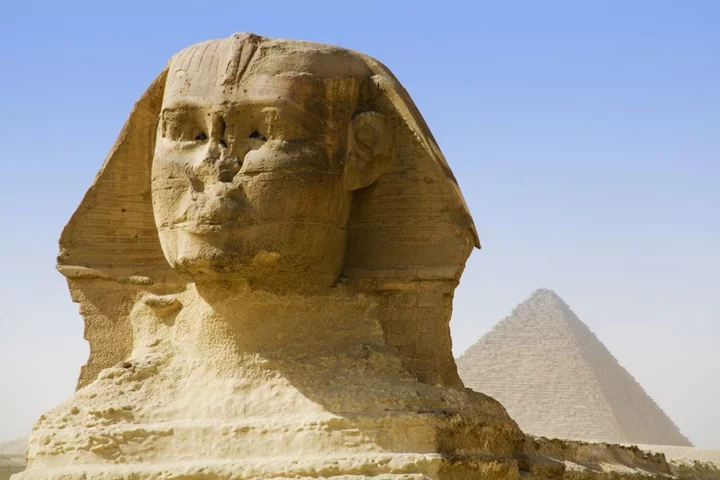
Scientists make key discovery about mysterious origins of Egypt’s Great Sphinx
The feats achieved by the Ancient Egyptians have long flummoxed even the most renowned experts. For example, how on earth did they build the Great Pyramid of Giza? It’s taken centuries for scientists and archaeologists to come up with an answer, and even that’s not set in stone. But now, researchers believe they’ve finally worked out how the Great Sphinx was made more than 4,500 years ago. Sure, there’s a pretty broad consensus about how the face of the giant limestone statue was created – it was most likely hand-carved by stone masons. But the imposing, multi-layered body had continued to evade explanation. However, researchers at New York University, have finally concluded that the body came about. And it wasn’t all thanks to the masonry skills of local workers. They believe that the shape was sculpted by Mother Nature herself, in the form wind. “Our findings offer a possible ‘origin story’ for how Sphinx-like formations can come about from erosion,” Leif Ristroph, senior author of the study, said in a statement. “Our laboratory experiments showed that surprisingly Sphinx-like shapes can, in fact, come from materials being eroded by fast flows.” For their study, the team took harder rock encased in mounds of soft clay to mimic the terrain along the Nile River in northeastern Egypt. They then washed over these formations with a fast-flowing stream of water to replicate the wind and, in the end, the clay assumed a Sphinx-like shape. The resulting form consisted of a lion’s “head,” “neck,” “paws” laid out in front and an arched “back". “There are, in fact, yardangs (rock features formed by air erosion) in existence today that look like seated or lying animals, lending support to our conclusions,” Ristroph pointed out. Still, we’re sure Ristroph would be the first to admit that he and his colleagues weren’t the first to come up with the aeolian erosion theory. In 1981, geologist Farouk El-Baz suggested that the iconic Sphinx was originally a flat-topped shape that was worn down by wind over time. Furthermore, El-Baz believed that the builders of Ancient Egypt would have known of these natural processes, and so carefully selected the shapes of their most iconic structures to withstand them. "Today, the pyramids of Giza exist in perfect harmony with their windy environment," the scientist said back in 2001. "Had the ancients built their monuments in the shape of a cube, a rectangle, or even a stadium, they would have been erased by the ravages of wind erosion long ago." Nevertheless, the New York University team were the first to show exactly how this phenomenon could have occurred, and their findings have broader implications. "The work may also be useful to geologists as it reveals factors that affect rock formations—namely, that they are not homogeneous or uniform in composition,” Ristroph said. "The unexpected shapes come from how the flows are diverted around the harder or less-erodible parts." Sign up for our free Indy100 weekly newsletter Have your say in our news democracy. Click the upvote icon at the top of the page to help raise this article through the indy100 rankings
2023-11-01 20:25
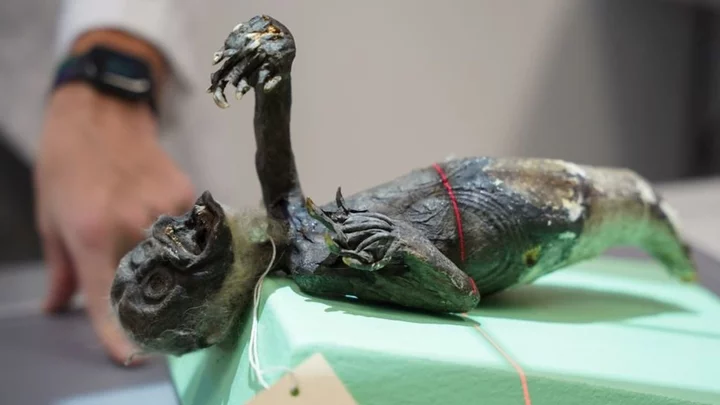
‘Mermaid mummy’ from Japan found to be a Frankenstein's mix of body parts
Frankenstein’s monsters aren’t just for Halloween, as a team of US scientists have recently discovered. The experts at Northern Kentucky University (NKU) were tasked with analysing the remains of a supposed mummified “mermaid”, and what they found was pretty gruesome. The mummy was brought to America from Japan more than 100 years ago after being donated it to the Clark County Historical Society in Springfield, Ohio. It arrived at the society in 1906 but documents supplied alongside the strange specimen suggest it dates back to the mid-1800s. This means that for some 170 years, the true identity of the wisened, 29-cm-long creature remained a mystery. However, thanks to modern technology, the team at NKU has finally worked out that the sinister-looking “siren” is, in fact, a ghoulish hybrid of monkey, fish and lizard. Joseph Cress, who led the project, told Live Science that he and his colleagues used X-ray and CT scans to investigate the creepy cadaver. "This allowed us to see [the mummy] in almost every dimension in the hopes to see what was inside it," he explained. They determined that that the “mermaid” consists of the head and torso of a monkey sewed onto the body of a fish, and its “hands” are the clawed legs of a lizard – most likely a Komodo dragon. The scans also revealed a pair of wooden stakes hidden inside the chimeric corpse – one running from head to tail and another across the shoulder blades — which were presumably inserted to keep the monster in one piece. Cress and his colleagues are currently trying to reconstruct a more detailed model of the mermaid and its individual components, according to Live Science. Once these models are complete, they plan to send them to zoos and aquariums to help confirm the different parts on a species level. However, jaw-dropping this specimen may be, it's not the only “mermaid” to be debunked in recent times. In March 2022, researchers analysed a similar example that was found in a hidden box in a Japanese temple. They also expected the creature, which was 30.5 cm long and dated back to the mid-1700s, to be a monkey-fish hybrid. However, tests conducted in February this year revealed that it was, in fact, predominantly made of cloth, paper and cotton. It had been painted with sand and charcoal and held together by metal pins, while various animal parts, including fish skin and mammal hair, had been stuck to it. Experts believe that the two “mermaids” were made to resemble "ningyo" — hideous fish-like creatures with human heads and sharp claws from Japanese mythology. According to legend, a nun named Yaobikuni lived for 800 years and retained the youthful appearance of a young woman, after eating a ningyo. Her immortality made the creatures a symbol of longevity, so it’s likely that fraudsters tried to recreate the mermaids to sell them to wealthy seekers of immortality. Still, at least the owners of these two examples didn’t make the mistake of trying to eat them. Sign up for our free Indy100 weekly newsletter Have your say in our news democracy. Click the upvote icon at the top of the page to help raise this article through the indy100 rankings
2023-11-01 19:28
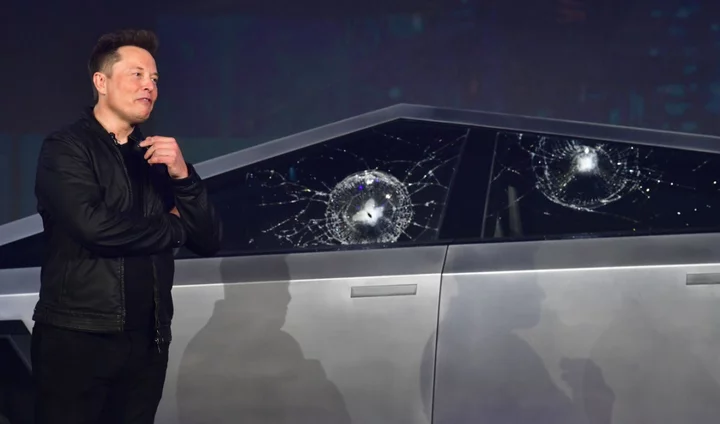
Tesla to offer ‘beast mode’ version of Cybertruck with bulletproof panels
Tesla will offer a “beast mode version” for its much anticipated Cybertruck once it is rolled out by the end of this year, Elon Musk has said. In his latest interview with Joe Rogan on Tuesday, Mr Musk expressed hope that the “beast mode” version of the vehicle will be able to go from zero to 60 mph in under three seconds. The multibillionaire owner of X/Twitter had earlier said the Cybertruck will also get “performance” and “kicks ass” versions. However, Mr Musk did not elaborate on the other features that will be included in these versions of the electric vehicle (EV). He also reiterated that the Cybertruck, expected to launch in November, will have bulletproof steel panels and an option for people to purchase bulletproof glass. “You can make anything bulletproof if you want, but the glass has to be very thick to be bulletproof, so it can’t go up and down,” Mr Musk said. During the interview, Mr Rogan tried shooting an arrow at the vehicle’s stainless steel body. The projectile caused a small dent on the side of the Cybertruck model. Mr Musk said upcoming demonstrations will show the Cybertruck is bulletproof. The Tesla titan said one demonstration will have the vehicle being shot at with a Tommy gun, a 45mm shotgun and a 9mm gun. “Trucks are supposed to be tough, right?” he said. The bulletproof nature of the truck, dubbed “an armoured personal carrier from the future”, has been the subject of intense hype ever since it was unveiled. Mr Musk’s first demonstration of the toughness of the Cybertruck in 2019 had become a misfire as the window of the vehicle immediately smashed after he invited an audience member to throw a small metal ball at it. “Oh my f***ing god. Well, maybe that was a little too hard. It didn’t go through, so that’s a plus... room for improvement,” Mr Musk exclaimed, later adding on social media that prior testing before the event had compromised the window. “Sledgehammer impact on door cracked base of glass, which is why steel ball didn’t bounce off. Should have done steel ball on window, *then* sledgehammer the door,” the Tesla chief had said. Last month, Mr Musk dampened hopes that the Cybertruck will revive profits for the company in the near future. He announced in an earnings call that it will take at least 18 months for the truck to become profitable. “There will be enormous challenges in reaching volume production with Cybertruck and making the Cybertruck cash flow positive,” the Tesla titan told investors and analysts. “The blood, sweat, and tears that will be required to achieve that is just staggering,” he said. Read More Kamala Harris arrives in the UK ahead of AI safety summit X now valued at $19bn – less than half of what Elon Musk paid for it Elon Musk slammed by Israel for offering to send Starlink to Gaza Elon Musk says X posts with misinformation are ‘ineligible for revenue share’ Twitter adds video calling – and lets strangers ring you Elon Musk was ‘almost in tears’ on Tesla earnings call, analyst claims
2023-11-01 13:17

Kamala Harris arrives in the UK ahead of AI safety summit
US Vice President Kamala Harris has arrived in the UK ahead of attending Rishi Sunak’s summit focused on the safe use of artificial intelligence (AI). Ms Harris touched down at Stansted Airport on Tuesday evening with her husband Second Gentleman Douglas Emhoff for the summit. She will represent the US at Bletchley Park, near Milton Keynes, on Wednesday and Thursday in place of President Joe Biden. French President Emmanuel Macron will also not be in attendance, whilst Canadian Prime Minister Justin Trudeau and German Chancellor Olaf Scholz are also believed to be unlikely to show up. But Downing Street denied on Monday that the summit was being snubbed by world leaders. Elon Musk, the Tesla CEO and owner of the social media site X, will attend and join Mr Sunak for a live interview after the summit closes. The Prime Minister hopes the summit on AI safety will cement the UK’s status as a leading world player in the cutting-edge technology. Mr Sunak also said last week that mitigating the risk of extinction because of AI should be a global priority alongside pandemics and nuclear war. It comes as Mr Biden signed an executive order on AI on Monday, and said the technology was driving change at “warp speed” and carries tremendous potential as well as perils. The order seeks to steer how AI is developed so that companies can profit without putting public safety in jeopardy. Using the Defence Production Act, it requires leading AI developers to share safety test results and other information with the government.
2023-11-01 06:45
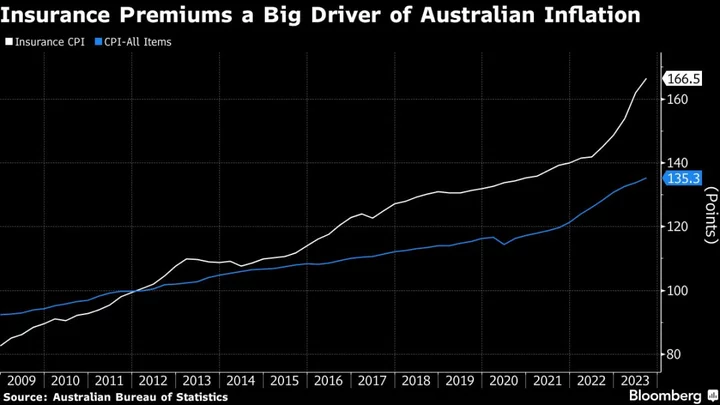
Australia’s Top Three Inflation Drivers Are Beyond RBA’s Control
Australian inflation is being driven by climate change, geopolitical shocks and government policies — factors typically beyond the
2023-11-01 03:46
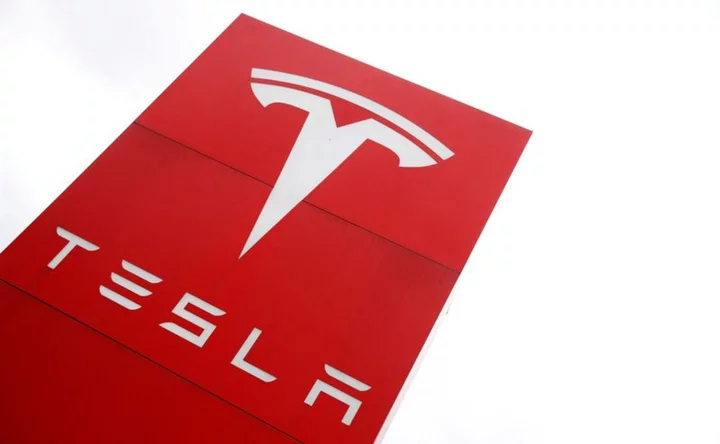
Tesla wins first US Autopilot trial involving fatal crash
By Dan Levine and Hyunjoo Jin (Reuters) -Tesla on Tuesday won the first U.S. trial over allegations that its Autopilot
2023-11-01 01:58
You Might Like...

Amazon unveils a "smarter and more conversational" Alexa amid AI race among tech companies
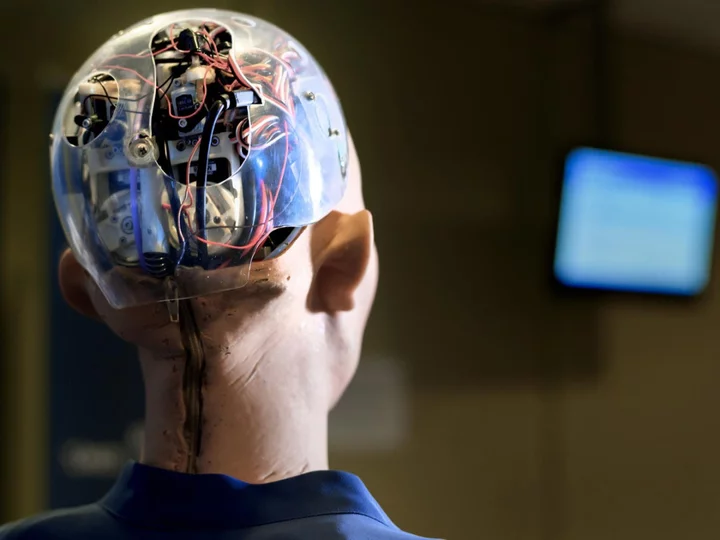
Watch as Robots take part in UN discussion on AI in healthcare
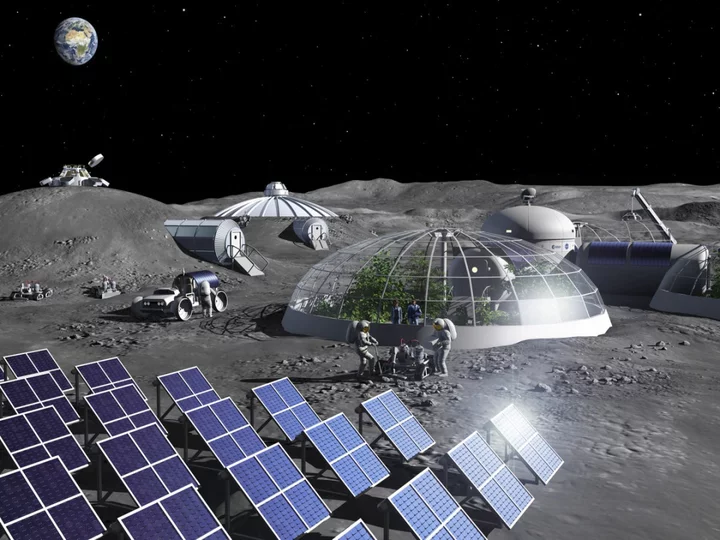
Future space missions could use all-female crews because they are more ‘efficient’
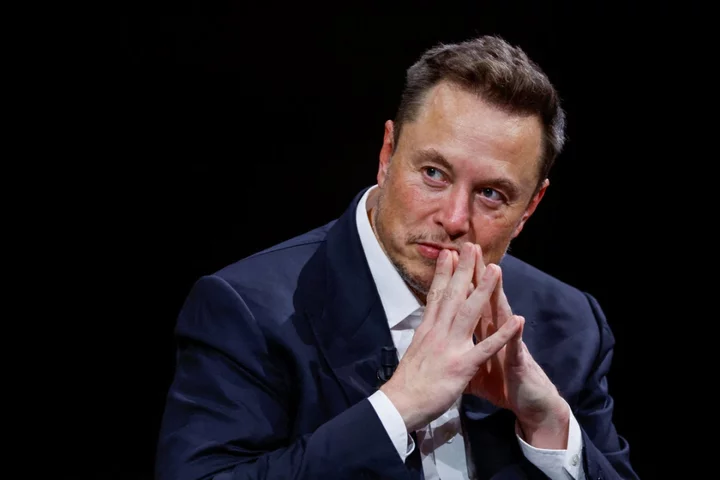
Twitter is in negative cash flow due to 50% drop in advertising revenue, says Elon Musk
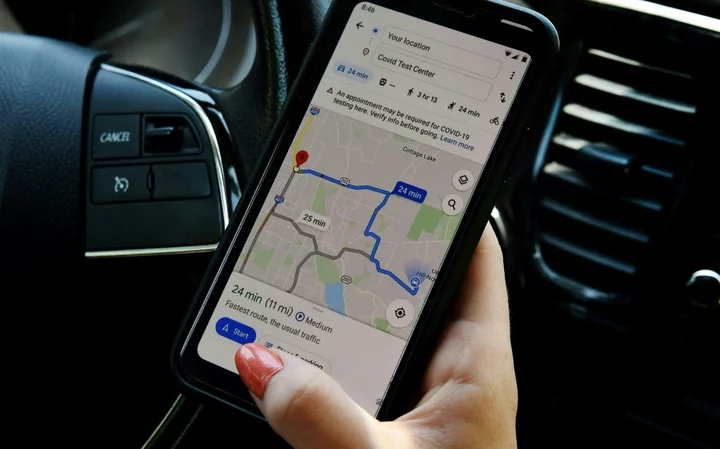
Google Lost Map Traffic with Apple Maps Switch on iPhones, Executive Says
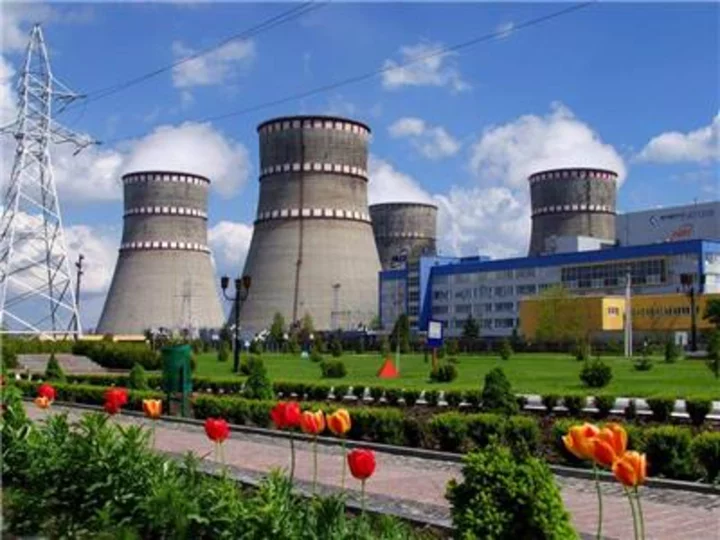
Westinghouse Strengthens Nuclear Safety in Ukraine with Advanced Cooling System Upgrades at Energoatom’s VVER-440 Reactors
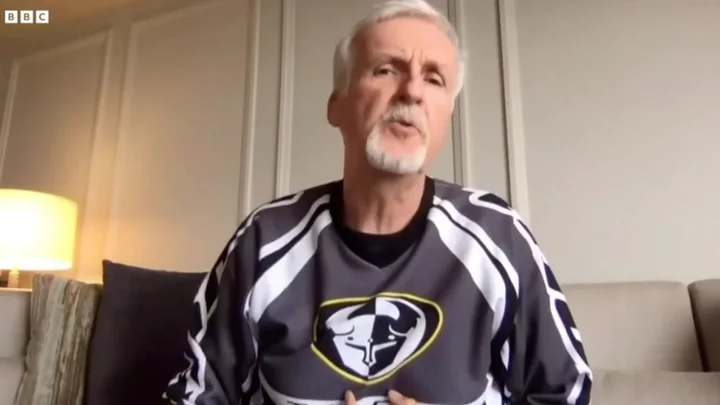
Inside Titanic director James Cameron's obsession with the deep ocean
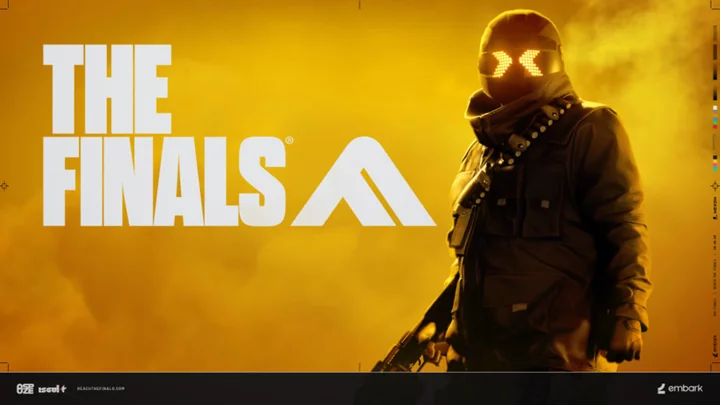
The Finals Closed Beta 2 Patch Notes 1: Fixes and Balance Changes
